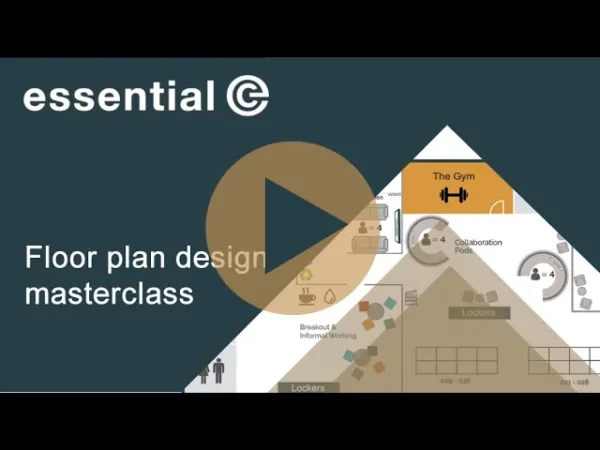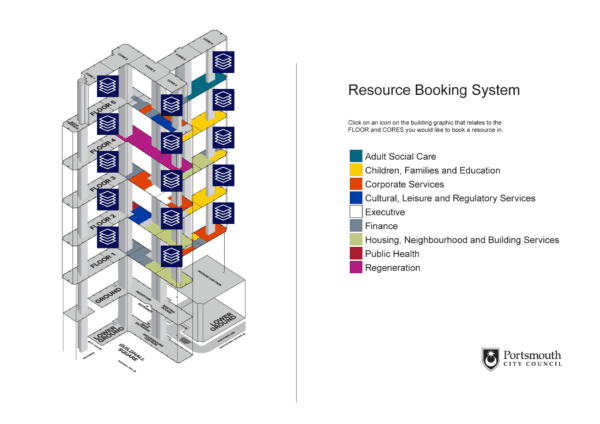Desk booking
Hot desking: The ultimate guide
Hot desking, also known as desk sharing or flexible seating, is a modern office trend that allows employees to use any available workspace instead of being assigned to a permanent desk.
With the rise of remote work and the need for more flexible and reduced office spaces, hot desking has become increasingly popular in recent years. In this article, we’ll explore the ins and outs of hot desking and whether it’s right for your enterprise.
Below we outline some of the key questions our customers have enquired about, if you have any other enquiries not answered here, please head over to our contact page and send us a message and we will call you right back.
What is hot desking?
Hot desking is when multiple employees share the same desk or workspace but use it at different times, therefore, instead of being assigned a specific desk, hot desking allows employees to choose an available desk that suits their needs for that day.
Hot desking can be done in various ways, from a first-come, first-served (hot desking) to desk pooling (hoteling) to a booking system (desk-booking).
By enabling your employees to choose where they sit and work each day based on their needs and preferences, hot desking can encourage collaboration and social interaction among colleagues. This approach in turn can save office space and therefore overheads.
Hot desking can present some challenges, such as the need for clear communication and organisation, the potential for employees to feel disconnected or disengaged especially for those who prefer a more structured or private workspace is ever present and understanding some of the challenges when implementing hot desking into your enterprise, can go a long way in helping your employees enjoy hot desking.
Is hot desking right for your enterprise?
Hot desking can be an excellent solution for enterprises with a large number of employees, a high degree of mobility or a flexible work schedule. However, it may not be suitable for every organisation. Some employees may prefer to have a permanent workspace, and others may find it challenging to work in a shared environment. Therefore, it’s essential to weigh the pros and cons and determine whether hot desking aligns with your company’s culture and goals.
Here are some factors to consider when deciding whether hot desking is a good fit for your enterprise
- Business needs: Consider whether hot desking aligns with your business needs and goals. Hot desking can be an effective way to reduce real estate costs, increase flexibility, and promote collaboration. However, it may not be suitable for all types of businesses or work styles.
- Office layout: Consider whether your office space is suitable for hot desking. Hot desking requires a flexible and adaptable workspace, with sufficient space for employees to move around and work in different areas. You may need to make adjustments to your office layout to accommodate hot desking.
- Employee preferences: Consider how your employees feel about hot desking. Some employees may welcome the flexibility and variety of working in different areas, while others may prefer a dedicated workspace. Consider surveying employees to gauge their preferences and concerns.
- Technology infrastructure: Consider whether your technology infrastructure can support hot desking. Hot desking requires a reliable and flexible IT system, with the ability to support remote workers and allow employees to reserve and access shared resources.
- Policies and procedures: Consider whether your organisation has the policies and procedures in place to support hot desking. This may include guidelines on desk reservations, equipment usage, and cleanliness and hygiene.
Overall, whether hot desking is right for your enterprise depends on a careful assessment of your business needs, office space, and employee preferences, as well as your ability to support the technology and policies required for the system to be successful.
How does hot desking benefit your enterprise?
Hot desking offers several benefits to both employers and employees, for employers, it can lead to cost savings, increased productivity, and better collaboration among teams. Employees can enjoy more flexibility, improved work-life balance, and the ability to work in a variety of environments. Hot desking can also promote a more egalitarian workplace, where everyone has access to the same resources and opportunities. Overall, hot desking can help create a more dynamic and collaborative office environment while also reducing costs and improving space utilisation.
Hot desking can benefit an office in several ways:
- Space utilisation: Hot desking allows for better use of office space, since employees don’t have assigned desks, the workspace can be designed to accommodate more people in less space, making the office more efficient.
- Collaboration: Hot desking can promote collaboration and communication among colleagues by encouraging you to work in different areas and interact with different people. This can help you build stronger relationships with your co-workers and improve teamwork.
- Flexibility: Hot desking offers employees greater flexibility in terms of where and how they work. It allows them to work from different locations within the office or even remotely, which can improve work-life balance.
- Cost savings: Hot desking can be more cost-effective for businesses because it reduces the need for expensive office real estate. Instead of paying for individual workstations, businesses can create a shared workspace that is more affordable.
- Networking: Hot desking can provide opportunities to network and meet new people within your organisation. By working in different areas of the office, you may be able to connect with colleagues from other departments or teams that you may not have had the chance to interact with otherwise.
- Reduced boredom: Hot desking can help reduce boredom and monotony by providing you with a variety of work environments and co-workers to interact with. This can help keep you engaged and motivated throughout the day.
- Improved productivity: Hot desking can improve productivity by reducing distractions and providing you with the opportunity to work in an environment that suits your specific needs for that day. For example, you may choose to work in a quiet area when you need to focus, or in a more collaborative space when you need to brainstorm.
- Sustainability: If your office is focused on sustainability and reducing its carbon footprint, hot desking can help by reducing the amount of energy used for heating, cooling, and lighting unused office space.
The decision to implement hot desking should be based on your company’s specific needs and goals, as well as the needs of your team and organisation. If you value flexibility, collaboration, and networking, and feel that hot desking could improve your productivity and work experience, it may be worth considering.
However, before deciding to implement hot desking, it’s important to consider the potential challenges, such as concerns about privacy, storage space, and employee preferences. It may also be helpful to conduct a trial period or survey employees to gauge their interest and satisfaction with the arrangement. Ultimately, the decision to use hot desking should be based on the specific needs and goals of your office.
What are the challenges and disadvantages of hot desking?
Hot desking is not without its challenges and drawbacks. One of the biggest concerns is the potential for reduced productivity due to distractions or difficulty finding a suitable workspace.
Here are some of the most common disadvantages associated with hot desking:
- Lack of personalisation: With hot desking, employees do not have a dedicated workspace that they can personalise to their liking. This can make it difficult for employees to feel a sense of ownership over their workspace and create a space that feels comfortable and inviting.
- Reduced productivity: Hot desking can lead to distractions, which can make it difficult for employees to focus on their work and be productive. Employees may spend more time trying to find a suitable workspace than they would if they had a dedicated desk.
- Difficulty building relationships: With hot desking, employees may not have the opportunity to build relationships with their colleagues in the same way that they would if they were seated near each other. This can make it challenging to build a strong sense of team spirit and collaboration.
- Technology challenges: With hot desking, employees may need to adjust to different computer systems, monitors, and other tools every time they switch desks. This can create challenges when it comes to technology and equipment, which can be frustrating for employees.
- Hygiene and cleanliness concerns: With multiple people using the same workspace, it can be difficult to maintain a clean and hygienic workspace. This can create concerns around the spread of germs and illness.
- Emotional stress: With hot desking, employees may feel stressed or anxious about finding a suitable workspace, particularly if there are limited options available or if they are seated in a noisy or distracting area.
- Logistics: Hot desking can create logistical challenges, particularly for organisations that have a large number of employees or multiple office locations. Ensuring that there are enough available workspaces, booking systems, and other tools can require significant planning and coordination.
While hot desking can be an effective way to optimise office space and increase flexibility, it is important for organisations to carefully consider these disadvantages and take steps to address them in order to ensure that the system is successful. Below we outline tips on implementing a hot desking system to help ease the transition for you and your employees.
Tips on implementing a hot desking system
Planning for hot desking can offer several benefits to your organisation from real-estate costs to employee collaboration but get it wrong and you may be in for some trouble down the line. Introducing hot desking to an organisation requires careful planning and effective communication.
Here are some steps to consider when introducing hot desking:
- Assess the space: Before introducing hot desking, it’s important to assess the available office space to determine how many people can comfortably work in the space at the same time. This will help you to determine how many desks or workstations you need.
- Address concerns: Address any concerns that employees may have about the hot desking system, such as concerns about privacy, hygiene, or noise. Consider creating a feedback mechanism so that employees can provide feedback on the system and suggest improvements.
- Implement a desk booking system: A desk booking system enables employees to reserve desks and workspaces in advance, reducing the chance of overbooking and ensuring that there are enough desks available for everyone who needs them.
- Provide training: Provide training to employees on how to use the hot desking system, including how to reserve a desk, how to set up equipment, and how to troubleshoot any issues.
- Use a flexible seating plan: A flexible seating plan allows employees to move around the office and work in different locations depending on their needs. This can include open seating, hot desking, and collaborative spaces.
- Consider ergonomic design: When designing your workspace, consider ergonomic principles to ensure that your employees are comfortable and productive. This can include adjustable desks, comfortable chairs, and good lighting.
- Encourage collaboration: Collaborative workspaces can help to foster teamwork and creativity. Consider setting up designated spaces for team meetings, brainstorming sessions, and other collaborative activities.
- Implement clear desk policies: A clear desk policy ensures that employees keep their workspace clean and tidy, reducing the risk of clutter and improving productivity.
- Develop clear guidelines: Develop clear guidelines for how hot desking will work in your organisation. This should include information on how to reserve desks, how long employees can work at a desk, and how to handle lost or stolen equipment.
- Provide adequate equipment: Ensure that each desk has the necessary equipment and resources that employees need to work effectively, such as a computer, a phone, and a comfortable chair.
- Consider privacy and noise levels: Ensure that employees have adequate privacy and can work in a comfortable environment. Consider using noise-cancelling headphones or soundproofing materials to reduce distractions and promote concentration.
- Monitor and adjust the system: Monitor the hot desking system on an ongoing basis to ensure that it is meeting the needs of employees and the organisation. Consider making adjustments to the system as needed to improve its effectiveness and address any issues that arise.
Introducing hot desking requires careful planning and effective communication in order to ensure that employees are comfortable with the system and that it meets the needs of the organisation.
In conclusion, hot desking can be an effective solution for enterprises looking to optimise their office space and promote a more flexible and collaborative work environment. By considering the pros and cons, implementing best practices, and addressing potential challenges, you can create a successful hot desking system that benefits both employees and the company.
Desk Booking Solutions built on Microsoft 365
Allow our experts to help guide you to select the best desk booking system for your enterprise

















